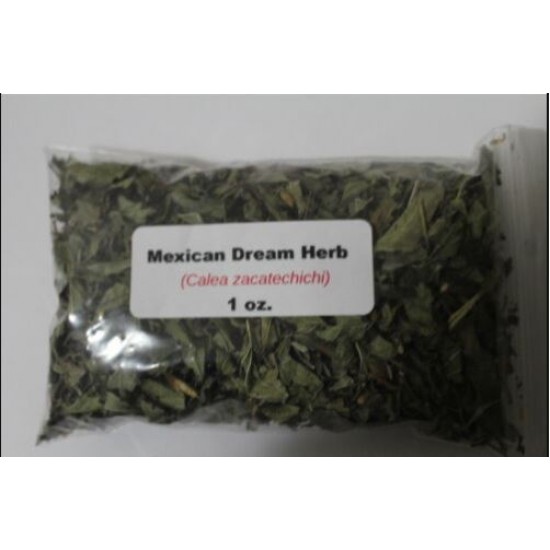Prodigiosa - Dream Herb - Amula ( Mexican Dream Herb (Calea Zacatechichi) -1oz


- Stock: 994
- Model: Prodigiosa - Dream Herb - Amula
Available Options
Prodigiosa (Brickellia canvanillesi, prodigiosa, amula, hamula, calea zacatechichi, dream herb, cheech, bitter grass) is used in traditional medicine to stimulate pancreas and liver secretions, increasing bile synthesis and evacuation of bile from the gallbladder. Prodigiosa is used to treat diarrhea, stomach pain, and gallbladder disease, and it is used to treat diabetes by controlling blood-sugar levels. Prodigiosa is used to treat headaches and fever. Prodigiosa has antianxiety properties and induces a vivid dream state.
Origin: Southwestern North America, New Mexico General dose: Prodigiosa is usually consumed as a infusion/tea—2–4 oz. standard infusion. Standard infusion: 1 tablespoon herb to 1 cup/8 oz. of boiling water. Steep the herb in the boiling water for 15–20 minutes. General dosage: Two times daily—morning and evening Suggested capsule dose: One 400 mg capsule Suggested capsule dosage: One capsule two times daily (Start at a lower dose if necessary)
(Medical caution: women who are pregnant should consult with a physician. People with type 1 diabetes are advised to consult with a physician. Do not exceed suggested dosage.)
BOTANICAL NAME: Brickellia Grandiflora
COMMON NAMES: Prodigiosa, Bricklebush, Tasselflower, Dream Herb, Amula
WHAT IS PRODIGIOSA?
This bushy herb with dark green leaves on the upper side with a grey- purple hue on the underside grows anywhere between three to five feet in height. The flowers on this plant range from a pure white shade to a yellow shade and can be found growing in clusters. This perennial plant can be found blooming almost all through the year. In Mexico, it is believed that this plant was often used to treat arthritis and was frequently added to baths in order to provide some form of relief to aching joints. On the other hand, Prodigiosa is often spoken about as being associated with the dark arts as it was used in voodoo as a part of the rituals. However, this herb is easy to cultivate and grows just as well in a plant pot too. Its high medicinal benefits shouldn’t be overlooked and by growing this herb in your backyard, you’re never too far from a fresh cup of herbal tea.
BENEFITS OF PRODIGIOSA
Diabetes can be a very painful disease to live with especially if one is dependent on taking insulin injections for life. Ironically, Prodigiosa has been found to be very effective in lowering high blood sugar levels of diabetic patients. But the irony is that while it may help result in a medical report that looks better for patients suffering from Type II diabetes, it can cause more damage to patients who suffer from Type I diabetes. This herb has properties that enable better digestion of fat in the body and it has been proven to improve the synthesis of bile in the liver. Studies show that this herb, when taken under the advice of a medical practitioner can actually dissolve tiny gallstones from the body as well. Although, we eat three meals or more every day, we rarely spare a thought about the stomach lining that often bears the brunt of playing an important but often unnoticed role in food digestion. In fact, certain food stuff and over spicy food tends to irritate the stomach lining over time thus giving rise to chronic gastritis and other digestive system disorders. The Tasselflower on the other hand has been proven to aid in better food digestion, especially in the digestion of food that may take longer to be broken down by the body. The ability of this herb to treat certain kind of cataracts needs to be studied in more detail.
HOW TO CONSUME PRODIGIOSA
A warm and rejuvenating tea can be made by brewing the leaves in warm water which can be safely drunk two to three times a day. The leaves are rather bitter in taste and that’s why it would be better to add a hint of sweetness with a spoon of honey. However, it is advisable that patients who may be taking treatment for Type I diabetes should avoid consuming this herb in any form. Similarly, the intake of this tea for patients who suffering from gall stones is advised only under proper medical supervision.


-250x250w.jpg)







